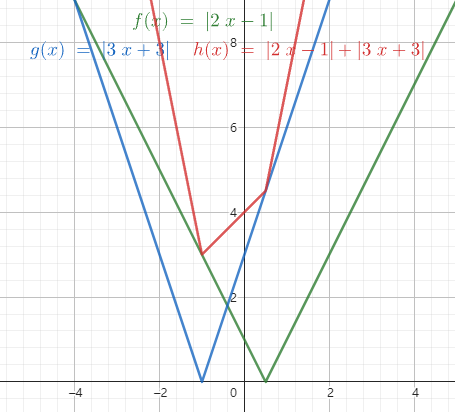C - Wandering Robot
基本信息
| 题目出处 | 2019 山东省大学生程序设计竞赛 |
| 队伍通过率 | 211/307 (68.7%) |
题解
设第 \(i\) 步之后机器人的坐标是 \((x_i, y_i)\),则 \((tn + i)\) 步之后机器人的坐标是 \((tx_n + x_i, ty_n + y_i)\),距离原点的曼哈顿距离为 \(|tx_n + x_i| + |ty_n + y_i|\)。
\(f(t) = |tx_n + x_i|\) 的函数图像是一个 V 形,两个这样的函数加起来,图像是一个开口向上的,由三个一次函数组成的“碗”形。

也就是说,只有 \(t\) 尽可能小或者尽可能大,曼哈顿距离才能尽可能大。而 \(t \in [0, k - 1]\),因此我们只要考虑 \(t = 0\) 和 \(t = k - 1\) 的情况即可。
复杂度 \(\mathcal{O}(n)\)。
参考代码
1
2
3
4
5
6
7
8
9
10
11
12
13
14
15
16
17
18
19
20
21
22
23
24
25
26
27
28
29
30
31
32
33
34
35
36
37
38
39
40
41
42
43 | #include <bits/stdc++.h>
#define MAXN ((int) 1e5)
using namespace std;
int n, K;
char s[MAXN + 10];
long long ans;
void solve() {
scanf("%d%d%s", &n, &K, s + 1);
// (X, Y) 是 n 步之后所在的坐标
long long X = 0, Y = 0;
for (int i = 1; i <= n; i++) {
if (s[i] == 'U') Y++;
else if (s[i] == 'D') Y--;
else if (s[i] == 'L') X--;
else X++;
}
ans = 0;
// (x, y) 是 i 步之后所在的坐标
long long x = 0, y = 0;
for (int i = 1; i <= n; i++) {
if (s[i] == 'U') y++;
else if (s[i] == 'D') y--;
else if (s[i] == 'L') x--;
else x++;
ans = max({
ans,
// t = 0
abs(x) + abs(y),
// t = k - 1
abs((K - 1) * X + x) + abs((K - 1) * Y + y)
});
}
printf("%lld\n", ans);
}
int main() {
int tcase; scanf("%d", &tcase);
while (tcase--) solve();
return 0;
}
|
